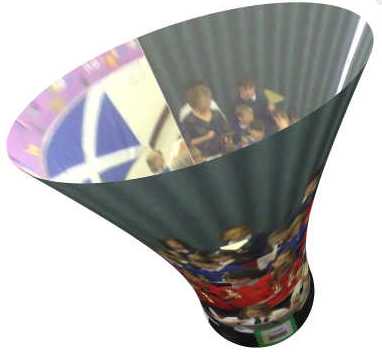Why Handbells
 The use of ringing instruments (handbells, handchimes or belleplates) is a superb method of incorporating the music education principles of Orff and Kodaly in the classroom.
The use of ringing instruments (handbells, handchimes or belleplates) is a superb method of incorporating the music education principles of Orff and Kodaly in the classroom.Ringing uniquely involves pupils in visual, auditory and kinaesthetic learning - that is, seeing, hearing and actively doing!
Ringing instruments can be used in tandem with singing or other classroom instruments with ease - handbells, handchimes or belleplates complement the use of many other tuned and untuned percussion instruments available in the school. Compared to tuned percussion Orff-style instruments traditionally used in schools (e.g. glockenspiels, xylophones, etc) the handbell family of instruments (handbells, handchimes and belleplates) have some features which present some advantages:
The pupil can focus more easily on music or a teacher while performing (the pupil does not have to worry about a beater missing a glockenspiel bar while eyes are looking at the teacher);
Being a kinaesthetic activity means that pupils physically make and stop the sound and thus note values and rests are easily taught in that the child must make the physical action last the duration of the note value - the visual movements also make it attractive to pupils;
 The spirit of interdependence and teamwork is fostered as each pupil is essential to the whole;
The spirit of interdependence and teamwork is fostered as each pupil is essential to the whole;Music reading is more easily graded according to ability as pupils can start with just one note and progressively be in control of greater number of notes as the ability to read music improves;
It is a cost-effective form of music making as one set can be used by a whole class at once (and suitable to be used at all stages of a school)
Click here to find out more about how handbells, handchimes or belleplates can be used in music education.
Click here to find out about someone who was a handbell ringer at 10-year-old and went on to become one of the most famous musicians in the world!